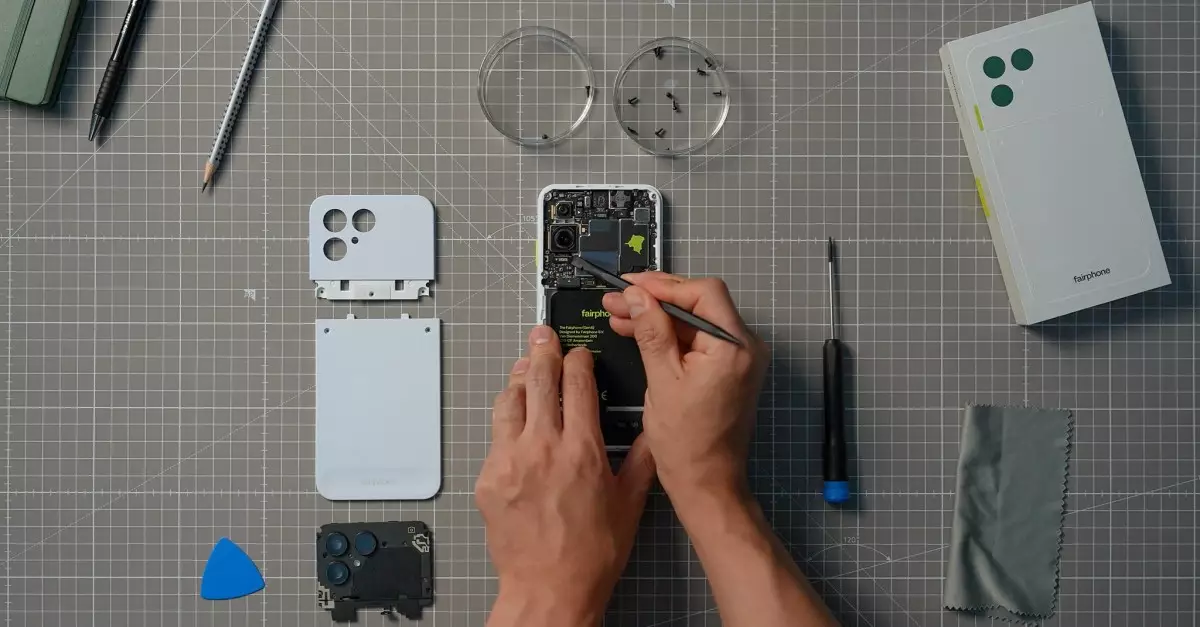The Fairphone 6 represents a bold leap forward in redefining what consumers should expect from their smartphones. Beyond the basic functionalities, this device epitomizes a philosophy that values longevity, repairability, and sustainability. It challenges the dominant industry trend of obsolescence driven by glued, intricate components that make repair costly or impossible. With each iteration, Fairphone continues to demonstrate that a responsible approach to electronics isn’t just aspirational but entirely feasible, setting a benchmark for other manufacturers to follow. The Fairphone 6 encapsulates a vision where technology integrates harmoniously with ecological mindfulness and user empowerment.
Impeccable Repairability: The Heart of Fairphone’s Identity
What truly distinguishes the Fairphone 6 from conventionally designed smartphones is its unwavering commitment to repairability. Despite having a smaller footprint and a streamlined profile, the device maintains a level of modularity that surprises skeptics. The array of removable parts—including the backplate, camera sensors, and USB-C port—embodies a revolutionary approach to device longevity. Notably, the only spot where glue is used is on the mainboard, which is understandable given the need for durability in that critical area. Most other components are secured through minimal screws that only require a single T5 Torx screwdriver for repairs, a tool that’s both affordable and accessible to everyday users.
This design philosophy speaks to a crucial truth: repairability shouldn’t be limited to professional service centers. Fairphone’s approach empowers consumers, making repair a straightforward, nearly effortless task—whether swapping a battery or replacing a damaged camera. The company’s promise of seven years of Android updates and eight years of security patches further underscores this long-term vision. By facilitating easy repairs and software support, Fairphone effectively extends the usable life of its devices, significantly reducing electronic waste—a critical issue in today’s tech-driven society.
Balancing Performance with Purpose
While the Fairphone 6 excels in repairability and sustainability, it isn’t about to compete directly with flagship phones on raw power. Its hardware specifications reflect a conscious trade-off, favoring eco-conscious design over bleeding-edge performance. The Snapdragon 7S Gen 3 chipset and dual rear cameras are perfectly adequate for everyday use but fall short of the top-tier specifications seen in premium devices. The USB 2.0 port, although a point of criticism, aligns with the device’s focus on durability and repairability rather than the fastest data transfer.
The display, however, is a highlight—its 6.3-inch LTPO OLED panel with an adaptive 10-120Hz refresh rate offers an engaging visual experience without compromising the phone’s sleek form factor. This decision embodies a philosophy that prioritizes user experience within the bounds of sustainable design. It’s a testament to a company willing to make deliberate choices that serve the broader goal of durability and environmental responsibility, rather than chasing the latest technological trends at a cost to repairability.
Striking a Balance Between Accessibility and Principles
Price is often a contentious issue for devices like the Fairphone 6. It’s priced higher in the US, largely due to distribution channels and regional market factors. Nonetheless, the premium doesn’t just buy the hardware; it reflects a broader commitment to transparency, ethical sourcing, and support. The device’s sturdy IP55 rating offers meaningful resistance against dust and water, despite being assembled with screws instead of adhesive seals. This design choice, often associated with higher repairability, proves that durability and resistance can coexist harmoniously with repair-friendly construction.
Fairphone’s strategy also emphasizes long-term software support and customer loyalty. With a guaranteed seven years of software updates, users are encouraged to retain their device longer—breaking the cycle of frequent, wasteful upgrades. The company’s loyalty program further incentivizes repair and prolongs device lifespan, fostering a community of environmentally conscious consumers. This approach positions Fairphone not merely as a smartphone manufacturer but as a catalyst for a sustainable digital future.
In essence, the Fairphone 6 challenges us to reconsider how we define quality in technology. It reminds us that durability, repairability, and sustainability are not mutually exclusive with modern design and function. Instead, they can coalesce into a device that serves the user’s needs while respecting the planet’s limits. This is a significant step forward—one that questions the very paradigm of fast, disposable electronics and advocates for a more responsible, empowered approach to our digital lives.

